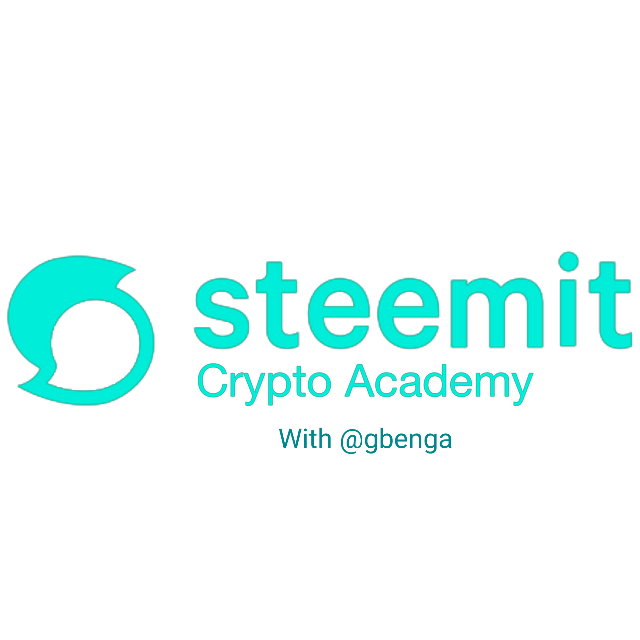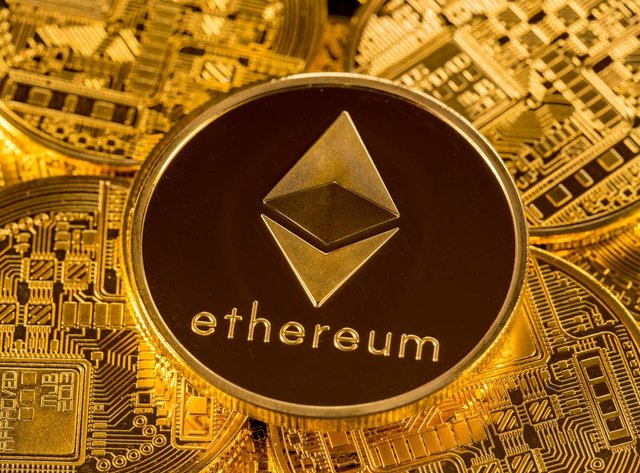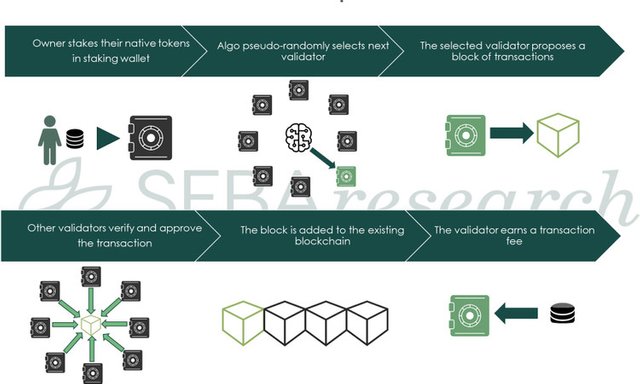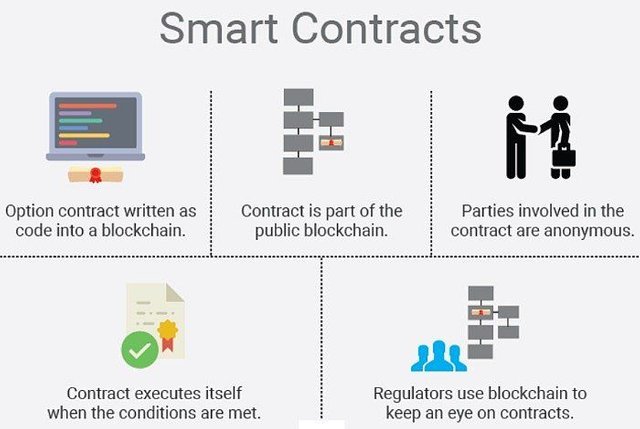The Steemit Crypto Academy Week 4: All About the Ethereum Blockchain


Course Outline
Introduction
What is Ethereum
Vitalik Buterin and Ethereum
How the Ethereum Blockchain and Ethereum Works
Proof of Stake
Difference Between Ethereum and Bitcoin
Smart Contract
Ethereum Mining
Ethereum Coin (ETHER)
ERC-20
Ethereum Gas
Ethereum Nodes
Ethereum Full/Client Nodes
Ethereum Light Nodes
Running a Node
Ethereum Plasma
Conclusion
Task

Introduction
Having you here for another Steemit crypto academy class is impressive and I want to use this opportunity to welcome you to the fourth lecture of this great citadel of crypto learning. Not forgetting to commend everyone who participated in the assignment/task of the previous class I hope to see you participate in this as well as interact with others as you go through their posts. My name still remains @gbenga, and I am your distinguished professor for this class.
In the previous post, I explained Bitcoin, the Bitcoin Network, Segwit, and Lightning Network, if you missed this class, you can read it here. In today's class, I will elucidate on Ethereum and the Ethereum Blockchain and I will spare no effort to making the class worth it. So, let the class begin>

What is Ethereum
Ethereum can be regarded as the progenitor of Decentralized Applications (dApps) and it is a decentralized computing platform just like the internet but instead of utilizing a single server, it uses multiple nodes simultaneously. Just like the internet allows for the creation of Applications but in a centralized manner, Ethereum allows for the creation and running of Decentralized Applications as well as the creation and use of Smart Contracts on the Blockchain. With Smart Contract, users can make agreements as trust the Blockchain to transact (buy, sell, and perform other transactions).
Ethereum's aim is to let people send cryptocurrency to anyone for a small fee (but this is not the same again as ETH gas fee can go up to $100 )1. In fact, recently, an entity paid $2.6 million as gas fee to send $130 2.

Vitalik Buterin and Ethereum
Ethereum didn't become a reality until 2015 but the brain behind the Blockchain project started as far back as 2012 when his father introduced him to Bitcoin. The 17-year-old boy fell in love with the blockchain technology but then wanted to solve a few setbacks associated with the Bitcoin blockchain and so he wrote to the Bitcoin Magazine about them but didn't see any improvement on Bitcoin so he decided to bring the solution to the world himself instead of waiting for others.
In 2015 Vitalik Buterin launched the Ethereum Blockchain and Ethereum as a cryptocurrency, the blockchain was an upgrade to the Bitcoin Blockchain with so many features including creating lots of different digital assets on its Blockchain.
How the Ethereum Blockchain and Ethereum Works
Never mistake the Ethereum Blockchain for its currency, Ethereum is the blockchain, and Ether (ETH) is its native currency. Ether (ETH), the native coin runs on the Ethereum blockchain and can be used for transactions including transferring to other wallets, paying for gas fees, used as a payment method during ICOs, and many more.
The Ethereum Blockchain is a ledger that keeps allowing for data to be stored in it continuously. Unlike the first generation of the Blockchain which Bitcoin used, the Ethereum blockchain (Second generation Blockchain) can do more asides the financial transaction purposes. The Ethereum blockchain allows users to program their own codes, and create their own applications on the blockchain known as Decentralized Application.
Bitcoin being the first cryptocurrency to be built on a blockchain uses the Proof of Work consensus while Ethereum being the first of the second generation of Blockchain technology uses the Proof of Stake consensus mechanism.
Proof of Stake
With Proof of Work, Consensus requires mining which needs physical devices such as expensive miners to validate blocks but Proof of Stake is completely different. Its consensus is completely virtual where random anonymous elections are done to select a node to validate/forge a block. This is chosen from various factors put together such as the staking period and staking quantity of the node 3.
Proof of Stake requires the locking of coins in the Ethereum network and the higher the stake, the more chances available to be the next validator but in other not to choose new nodes with higher stakes over the previously existing node, as well as prevent favoritism towards one node, Randomized Block Selection and ‘Coin Age Selection technique are used to determine the next validator. With Proof of Stake, validators are rewarded with transaction fees rather than being minting coins as rewards.

Difference Between Ethereum and Bitcoin
It is true that the dominance of these two cryptocurrencies are on a global scale but then, they have their difference. Bitcoin was the first cryptocurrency to be launched in 2009, bringing decentralized financial agreements and serving as a store of value, Ethereum was launched in 2015 improving on Bitcoin's Blockchain and creating a platform for distributed computing where programmability is enabled for devs.
Smart Contract
Smart Contracts has been before Ethereum, as far back as in the 1990s by Nick Szabo 4. A smart contract is a set of codes that executes certain commands giving results when certain requests are made.
A Smart Contract is a set of code that runs on the blockchain allowing for the creation of a trustless protocol where the two parties involved do not need to trust themselves but rather the code on the blockchain where if one side does not meet with the terms of the contract, it won't be executed. The Smart Contract is responsible for executing every command which leads to a transaction between two Ethereum address.

Ethereum Mining
In my previous class, I discussed mining with respect to Proof of Work so we will be looking at Mining Ethereum. Mining is the process whereby computers solve complex mathematical problems on the blockchain thereby making sure that all transactions on the blockchain are validated. By using computer power to solve cryptographic puzzles, the network is kept safe, and fair.
Mining on Ethereum is regarded as Hashing and for a node to mine successfully, it must be able to hash very fast. Miners are incentivized with the transaction fee from a block that is successfully validated, also miners are rewarded as with newly mined Ethereum as they are created. 5
Ethereum Coin (ETHER)
While Ethereum is the Blockchain, Ether (ETH) is the native cryptocurrency that runs on the Ethereum Blockchain. The coin was launched alongside the blockchain in 2015 with a pre-mined coin of 72 million ETH of which 50 million ETH were distributed in its public sale (ICO) at 1 ETH = 0.311 USD 6. Currently, there are 114,859,853 ETH in circulation according to coinmarketcap
ERC-20
The major purpose of Ethereum was to allow people to create tokens for the dApps built on the Blockchain. The tokens issued on the Ethereum blockchain are known as ERC-20 tokens. With the Ethereum smart contract, a lot of companies have been able to issue their tokens on the Ethereum Blockchain eg. Huobi Token (HT) owned by Huobi exchange. Most of these companies use printed/issued tokens to generate funding for their business through Initial Coin Offering (ICO) and use Smart Contract for seamless, and trustworthy exchange of funds as well as in the distribution of the tokens 7.
Ethereum Gas
Gas on Ethereum refers to the fee paid for a transaction to be processed on the Blockchain. It is referred to as gwei or Nanoeth It will be wrong to misplace ETHER (ETH) for Gas. ETH is the native coin whose price is determined by demand and supply on the open market while Gas is the fee paid to perform a transaction and its price is determined by miners. Without gas, a contract cannot be executed which means a transaction isn't possible.
Gas (gwei)amounts are fixed depending on the transaction performed but the price to purchase can change as it is determined by miners who measure the computational power used to perform a transaction 8.


Ethereum Nodes
Full/Client Nodes
Remember me saying that unlike centralized internet Ethereum uses nodes to validate blocks and store data. Ethereum uses Geth and Parity to download blocks from other nodes, verify that transactions are correct, as well as run smart contracts on the Network. Although these nodes run independently, they must have identical copies of the Blockchain. The nodes store the blockchain data, validate and verify blocks. 9
Ethereum Light Nodes
Nodes are required to keep the network decentralized and against censorship and so there must be several nodes running on the network but then, there are users who cannot run full nodes and this is where the light node comes into play.
Ethereum Light nodes are nodes that require fewer resources and minimal computing space to validate blocks. Light nodes require full nodes to supply the necessary information about the blockchain as they do not sync with the blockchain fully. Ethereum light nodes can be used to verify the validity of the data on the network.
Running a Node
Running a node on the Ethereum Blockchain can be done by anyone since it is decentralized. Running a node can be very easy as Ethereum has several node software such as Geth and Parity. To run a node, specialized hardware such as GPUs and ASICs is needed for full nodes while for light nodes, a laptop or a phone can be used using Raspberry Pi software. Ethereum is open-source, so anyone can create software that will be used in the development of the network.
Ethereum Plasma
Just like the Bitcoin lightning network explained in the previous class, Ethereum plasma also solves the Ethereum blockchain scalability problem. With Ethereum Plasma, a secondary chain communicates with the main Ethereum chain. Using Smart Contracts and Merkle Trees, Ethereum Plasma allows smaller chains to be created on the main Ethereum Blockchain thereby boosting the transaction throughput on the network.

Conclusion
Ethereum is an open-source network that brought about innovation while improving on Bitcoin's Blockchain. It was the progenitor of decentralized applications, giving users the ability to code on the blockchain as well as create their own tokens. Ethereum also brought about Decentralized Finance (Defi) which changed the scope of finance from a centralized third-party financial system to a peer-to-peer decentralized financial system.

Task
The Rules
- Everyone is eligible to participate in this task.
- The Post should be a minimum of 300 words and should be submitted in the crypto-academy community for visibility.
- You should include the exclusive tag #gbenga-week4, #cryptoacademy, and a tag of your country (for example #nigeria).
- Post should be your original content. Show references for images used when writing your post.
- Task runs until Sunday, March 7th, 2021

Image References
etherscan
the independent
Seba swiss
Hi dear professor @gbenga , nice class like always here is my task
https://steemit.com/hive-108451/@ramsesuchiha/crypto-academy-week-4-homework-post-for-gbenga-decentraland-project-ethereum-esp
shared on twitter
https://twitter.com/rael56948364/status/1366798956588654597?s=20
Hello prof @gbenga this is my first home work task for you i ahve joined this week and will be learning many things from you.
Greetings 🌸
https://steemit.com/hive-108451/@janemorane/crypto-academy-week-4-or-or-homework-post-for-gbenga-or-or-maker-dao-project-ethereum
hello sir here is my homework i hope its right competly in my own words as you said a bit long but good here is the link thanks for teaching
https://steemit.com/hive-108451/@azizulhassan/crypto-academy-week-4-homework-post-for-gbenga-ethereum-blockchain-explain-by-azizulhassan
Hello @gbenga, my name is @allbert and this is my very first homework
https://steemit.com/hive-108451/@allbert/the-steemit-crypto-academy-week-4-all-about-the-ethereum-blockchain
sir @gbenga my homework
https://steemit.com/hive-108451/@stella01/crypto-academy-week-4-homework-post-for-gbenga-ethereum-blockchain-explain
Good day sir @gbenga, please could you reveiw my post sir. I've made my corrections .Thanks plenty for the correction earlier. Here's the link to the post.
https://steemit.com/hive-108451/@kadosh2340/steemit-crypto-academy-week-4-task-or-ethereum-blockchain-uniswap-dapp-or-lesson-by-gbenga
Uff, esta tarea se me hace complicada, nunca e usado Ethereum bueno tengo una semana para intentarlo.
Mientras tanto dejo de nuevo Mi tarea de la semana 3.
This is absolutely a great one. Well detailed, thanks professor @gbenga for the great lecture which has taught me a lot.
I solved the task and it can be accessed here!
And it can also be found through this link;
https://steemit.com/hive-108451/@fredquantum/steemit-crypto-academy-week-4-task-or-ethereum-blockchain-uniswap-dapp-or-lesson-by-gbenga
Thanks for the lecture once again as I look forward to learn more from you.
Good day professor @gbenga, Thanks for the lecture.
Here is my entry;
https://steemit.com/hive-108451/@temitopef/homework-4-or-steemit-crypto-academy-week-ethereum-blockchain-or-lecture-by-gbenga
This is the entries of my post sir
https://steemit.com/hive-108451/@sparku22/the-steemit-crypto-academy-week-4-all-about-the-ethereum-blockchain